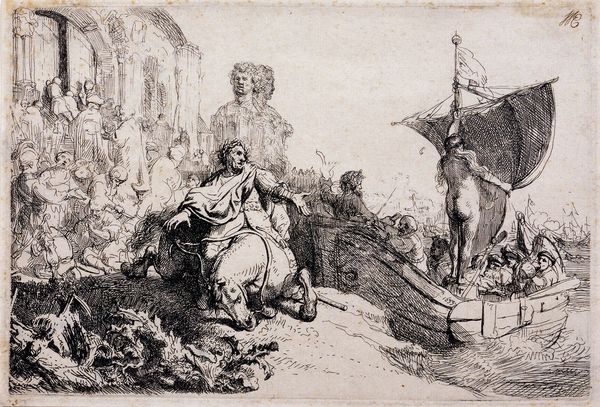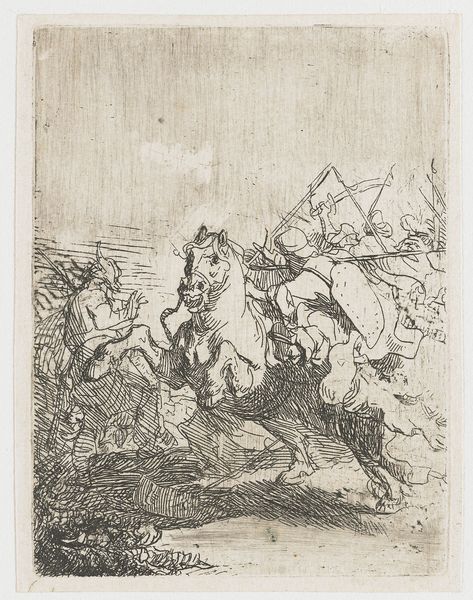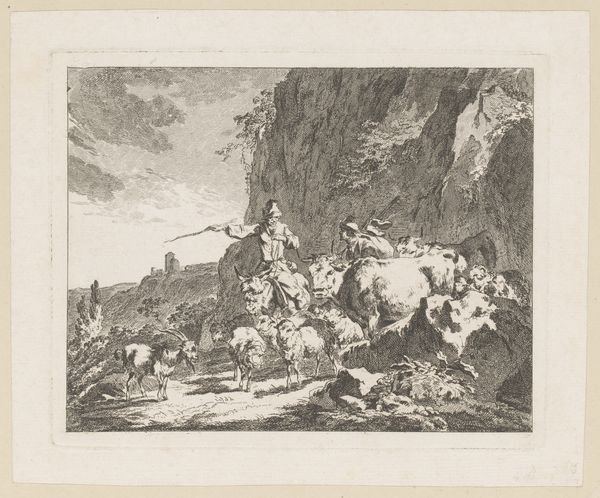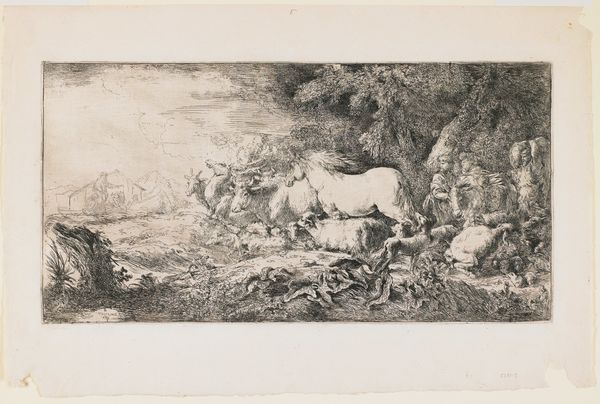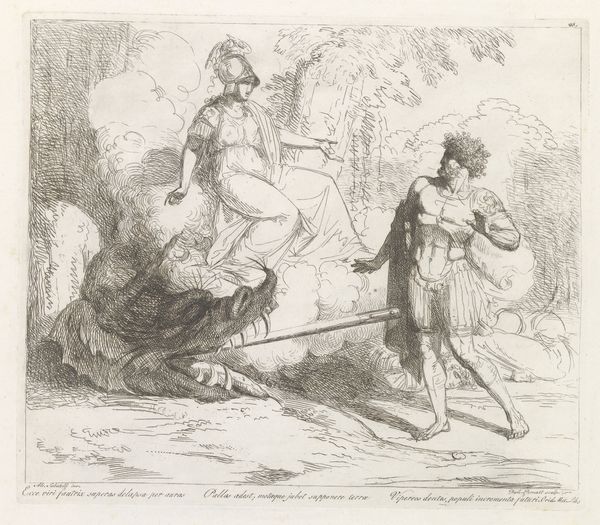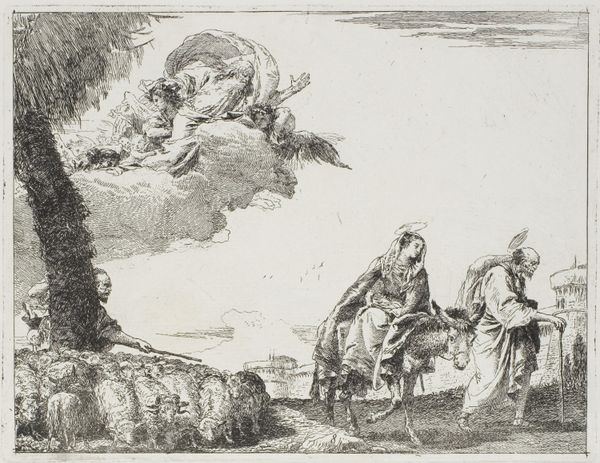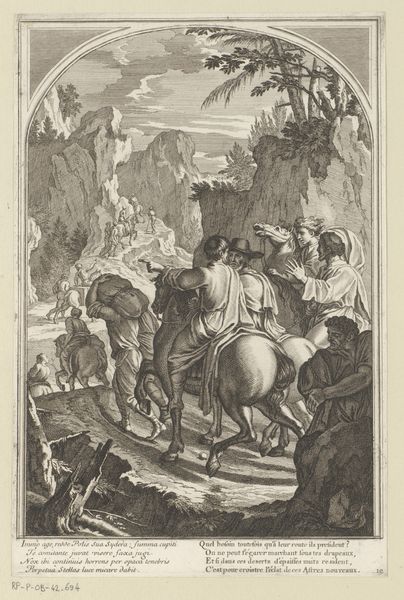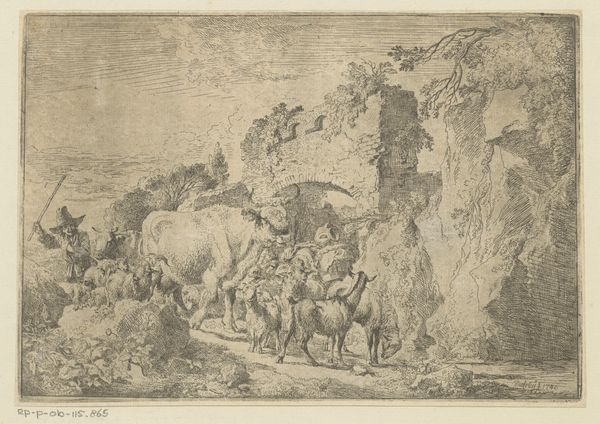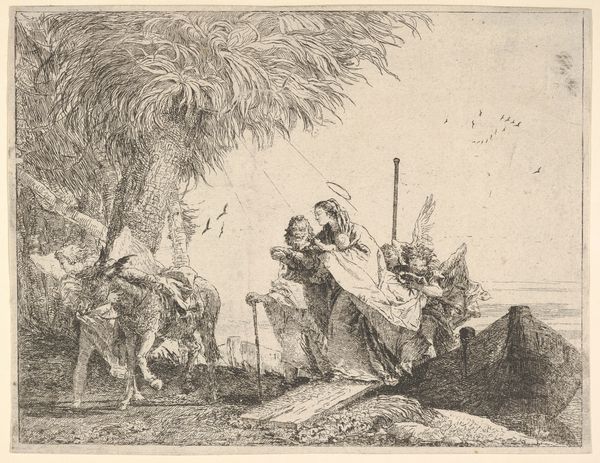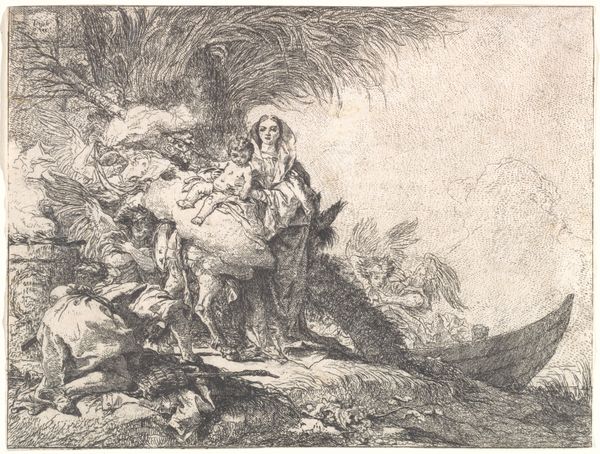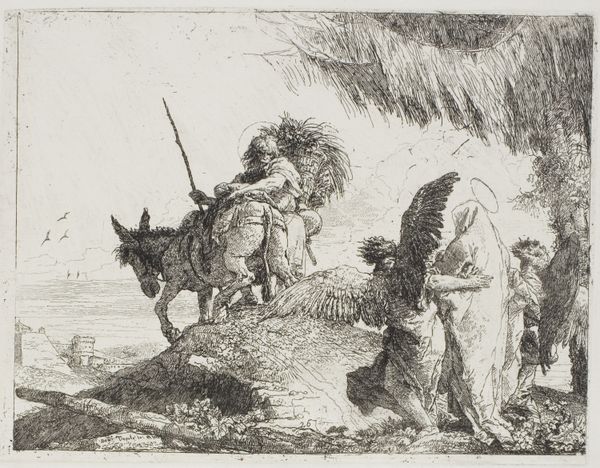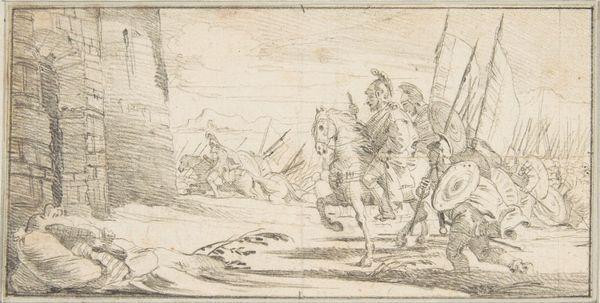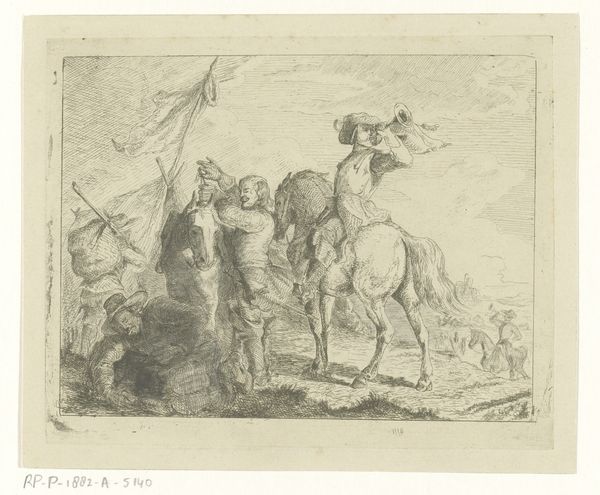
print, etching
#
baroque
# print
#
etching
#
history-painting
Dimensions: 4 3/8 x 6 9/16 in. (11.1 x 16.7 cm) (plate)
Copyright: Public Domain
Rembrandt van Rijn created this etching, "The Ship of Fortune", using metal, acid, and ink. The etching process begins with a metal plate covered in a waxy ground. Rembrandt would have drawn his composition into this surface, exposing the metal. The plate is then submerged in acid, which bites away at the exposed lines, creating grooves. Ink is then applied to the plate and wiped away from the surface, remaining only in the etched lines. Finally, the plate is pressed onto paper, transferring the image. Here, the etching technique allows for capturing fine lines and tonal variations, using hatching and cross-hatching to create depth and shadow. The linear quality lends a sense of dynamism to the scene. This method allowed the widespread distribution of images, making art accessible beyond the elite. The image embodies themes of ambition, risk, and the unpredictable nature of life. By understanding the labor-intensive process of etching, we can appreciate the artistry involved in creating these compositions.
Comments
minneapolisinstituteofart almost 2 years ago
⋮
Rembrandt occasionally received requests to illustrate books. This allegorical etching appeared in Elias Herckman's "Der Zee-Vaert Lof," a verse history of seafaring exploits that extended back to Noah and the Ark. The undulating baroque composition is a complex evocation of Augustus's defeat of Marc Antony. Weary of battle, the horse sinks to the ground. The event ushered in an era of peaceful maritime trade. Rembrandt gave himself a cameo role, using his own likeness for the image of Janus, the two-faced god whose temple was closed to mark the arrival of peace in Rome.
Join the conversation
Join millions of artists and users on Artera today and experience the ultimate creative platform.
